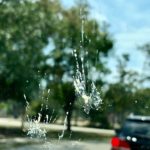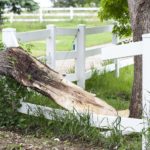Boy, did that last storm hit you hard!
You’re not sure where, but somehow water from the storm’s wild wind and rain got into your living room. Now your carpet is flooded and you have a huge mess on your hands.
If you live in Southwest Florida, then you know that this is an all-too-common occurrence.
How do you clean up the water damage in a way that prevents mold from growing? Let’s explore what causes mold and protect your home from further problems.
4 Things Mold Needs to Grow
You might be surprised to learn that mold can grow in as short as 48 hours. That means, after water damage, you have to act fast.
Mold needs four things to spread:
- Moisture
- Oxygen
- A food source
- A 41° and 104° environment
Moisture? Well, the water damage has that covered! Oxygen? It’s always there. A food source? Likely washed in from that dirty stormwater. Temperature? In Southwest Florida, it rarely dips below the 40s.
Uh oh. You’re a candidate for mold growth.
Don’t panic. Here’s what you can do:
1. Dry the areas that are immediately affected.
Moisture is one of the four things mold needs to grow, so your first step is the eliminate any wet or damp areas. Depending on where the damage occurred, wiping or soaking up the water with a cloth probably isn’t enough.
Set up some fans and let them circulate fresh air and dry out the damage. We recommend renting high-power fans for improved efficiency. Run some dehumidifiers to remove excess moisture in the area too.
Mold loves cellulose, found in all types of paper and wood products. Combined with moisture, areas exposed to either make the perfect breeding grounds!
The drywall that’s flooded should be replaced. For carpeting, consider renting a wet/dry vacuum or tearing it out completely, to ensure any underpadding is also fully dried out.
2. Sanitize everywhere that the water touched.
If any “food” sources are left behind or brought in from the outside, mold could breed. Plus, contaminated water from a natural flood or sewer backup can sweep in dangerous chemicals and pathogens that can harm your health.
To play it safe, sanitize any area touched by stormwater, including walls and any surfaces exposed, with soap and water or a mix of bleach and water. Be sure to wear gloves and protective wear while cleaning the area.
3. Get fresh materials, if necessary.
Some materials can be saved from the results of water damage, while others cannot. Insulation, for example, should be replaced if wet. The drywall may need to be replaced as well, and when you do, look for boards with mold and moisture inhibitors. Fiberglass, however, is probably a safe bet to dry and keep.
While most carpeting can be saved, use your judgment. Extensive pooling that lasted for hours might require ripping up the area for thorough drying.
4. Be mindful of odor.
If after 48 hours you still smell something musty, there’s a reason to be suspicious. Reassess the area for any signs of dampness now, before any mold spreads.
5. Consider a mold control solution.
For an extra layer of protection, consider spraying the damaged area with a special mold solution. A product like Concrobium’s mold control spray eliminates any existing presence of mold and prevents regrowth. It’s even safe to apply on furniture or other fabrics.
6. Don’t forget to triple-check outside.
If the water damage was due to a flood or storm, really hone in on your home’s exterior and make sure all was fixed properly to prevent additional damage.
Do you have drainage systems to avoid the accumulation of groundwater? Water can seep into your foundation and breed mold in the future. Check your windows, doors, and roof— anywhere moisture could get in.
Protect your Home Against Further Water Damage
Whether it’s your carpet or your walls, you really need to get close to the source and remove any trace of moisture post-water damage.
As a homeowner in Southwest Florida, you have to be mindful of the risk of hurricanes and flooding and take measures to protect your home from further water damage.
Many homeowners insurance policies will cover hurricane damage, but most don’t cover flooding, requiring an additional policy. Do you have the proper protection?
With the right insurance, these costly repairs could be covered. Get a free flood insurance quote from our team at Culbertson Agency, today.








